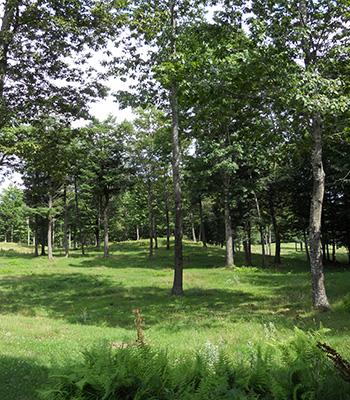An Investigation into the Composition, Management, and Economics of Silvopastures in the Northeastern United States, an Emerging Regional Practice

Use of silvopasture (combining tree production with forage and livestock production) is relatively uncommon in the Northern Forest region, but is garnering interest by farmers and foresters. Silvopasture serves as a sustainable alternative to the more common, but often poorly managed, woodland grazing. NSRC researchers documented characteristics of the practice in use and identified the need to address serious livestock management issues, which threaten health of forests and integrity of soils.
Researchers investigated structure, management, and reasons for use of silvopastures in New York state and New England by interviewing farmers and inventorying overstory conditions and forage species composition. They visited 23 unique silvopastures on 15 farms. Three farmers had been practicing silvopasture for over 30 years; the remainder were new to the practice in the past ten years. Forest conversion to silvopasture was the primary starting point, although orchard, open field edge, outdoor living barn, and plantation silvopastures were also documented. Primary reasons for adopting this practice included shade and a desire to maximize use of farm woodlands. Some practitioners were confused by what silvopasture is and what it is not.
Farmers are using silvopastures to diversify farms in the Northern Forest and New England regions. Decades old, well-managed silvopastures exist, although the majority in this study were in the first years of establishment. Confusion between silvopasture and degraded wooded livestock paddocks poses a significant threat to the success of silvopasture. Specifically, use of pigs in wooded areas needs attention. Increased outreach and education to farmers would help to address these issues and advance the sustainable practice of silvopastures.
